- Home
- Raymond Benson
The James Bond Bedside Companion Page 2
The James Bond Bedside Companion Read online
Page 2
I had thought I knew Ian Fleming thoroughly, in and out. Thus, I was surprised, and a trifle miffed with Ian, when I read John Pearson's book on Fleming. I was amazed to learn that Fleming had not graduated from either Eton or Sandhurst, which he certainly permitted and even encouraged me to believe. In fact, he even told me that on graduation from Sandhurst, he had selected the Black Watch as his regiment. I was also under the impression he left the Foreign Service for journalism. Actually, he had not; he never belonged to it. I was annoyed also, because his broken nose led me to believe that he had taken terrific physical punishment during his athletic years. I assumed his broken nose was acquired in amateur boxing or one of the collision sports. Once, however, when we playfully squared off, I perceived that he hadn't the slightest notion of the conventional boxing stance. "Egads," I said to him, "no wonder you've got a busted nose!" There is a certain intrinsic knowledge gained from physical damage which can only be learned by experience, which most civilians never learn, and never have to. Those who do experience it form a sort of freemasonry, a brotherhood, as it were, of those who have been badly hit, knocked unconscious, and managed to come back to life. This group was called by an appellation of the Old Frontier: "Fighting Men." I assumed that Fleming was a Fighting Man. Fighter he was, but a Fighting Man he was not: he was a very badly wounded civilian, both in life and in love. He lived a hard, emotional life, because unlike Fighting Men, he never emotionally accepted death—especially of his ideal love.
It is my belief and experience that most British and American boys receive a terrible emotional mauling in their first love affair because of the chivalry and Boy Scout ideals with which they are indoctrinated shortly after they can read: the Knights of Old, King Arthur, Sir Galahad. It seemed to me that Fleming was too badly wounded in his first love to talk about it. But I sensed there was some lissome, ivory-skinned girl with blue-black hair—for this is what he considered to be the ultimate type of beauty—off in some fir-clad hills in the idyllic Alpine snowlands, who was the cause of his deep wound. It seems to me that James Bond embodies Ian's revenge for the terrible hurt; Bond tumbles them into bed, leaves them with the memory of a savage ravishment which, ye gods, leaves them pining for Bond and forever bereft without him. This, of course, is the exact opposite of the ethereal "pure" love of the adolescent English and American boy. I think it is possible that Ian carried the image of the ideal damsel throughout his life, and found his adult ideal in Anne; that Anne was the ideal superwoman, the super-sophisticate, the toast of Mayfair, and the Madame de Stael of statesmanship and empires. This society is a twentieth-century version of Vanity Fair. It is dangerous, a maelstrom of descending disaster, and Anne and Ian got into its swirl when they were both old enough to know better. I suppose it is more accurate to say, she was already caught in it and he jumped in after her.
There is one thing, I think, that marks Ian's modus operandi: he mastered whatever he undertook. He was a first-class journalist, a magnificent administrator, a most excellent wordsmith, a writer who created his opposite, an upper-class knave, in Bond, an elegant cad, an amoral bastard, who performed every kind of crime, and with Ian's final, wry revenge on his class—of all things—in the service of Their Britannic Majesties! What a bitter twist!
Gresham's Law of the Twentieth Century is applicable to fields far wider than economics. Like bad currency, bad literature is driving out the good. If this be so, Ian Fleming's James Bond certainly gave the Gresham's Law of Literature a grand shove into the spotlight. Ian Fleming knew exactly what he was trying to do. Not the slightest presumption of innocence attaches to either his effort or the character of James Bond. His objective was the making of money. It made him a lot, but, ironically, not nearly as much as it made for others after his death. James Bond is no Sherlock Holmes, but as long as sexual fantasy exists (and it has existed from the Pompeiean friezes through Fanny Hill), James Bond will live on as a Popeye the Sailorman, a combination of the supermale and the Little Jack Horner of the Intelligence Services, who from here to eternity, will stick in his thumb and pull out a plum and say what a smart boy am I. Actually, in even the flaming character of Bond it can be seen that Ian Fleming was a great wordsmith and most excellent writer.
It so stunned me to find out that Ian hadn't graduated from Eton and Sandhurst, that I examined the pattern of his departures. There was a curious twist: he did not drop out until he had met the challenge. He had mastered the course but refused to cross the finish line. Having demonstrated he could win, he threw in his hand. That's what he probably did with his life: at the end, in pain, tired, and disillusioned, he said, "The hell with it, it's a bore. I've proven I can play the hand, I've won the pot—and now you can keep it." James Bond, who, in the novels, is often stricken with the malady of ennui, would probably have done the same thing had he been a real person. After all, what could be more ridiculous than a seventy-five-year-old James Bond?
Ernest L. Cuneo
Washington, D.C.
AUTHOR'S NOTE
Primary reference sources for Parts One and Two were John Pearson's The Life of Ian Fleming and personal interviews conducted with several of Fleming's close friends and associates. Parts Three and Four draw from the novels. There is an abundance of quoted material from the books; hopefully, these "clips" will serve as a collection of memorable passages—"The Best of Bond," so to speak. Primary reference sources for Part Five were John Brosnan's James Bond in the Cinema, Steven Jay Rubin's The James Bond Films, Bondage Magazine (published by the James Bond 007 Fan Club), and, of course, the films themselves. Finally, much trivia and information throughout the book was contributed by members of the James Bond 007 Fan Club and other Bond fans around the world.
To avoid confusion, all James Bond book titles and other books by Ian Fleming mentioned in the text are shown in small caps (GOLDFINGER), and all film and other book titles are italicized (Goldfinger).
PART ONE: THE JAMES BOND PHENOMENON
An early publicity shot of Ian Fleming, circa 1954. (Photo courtesy of owner.)
THE FIFTIES
The James Bond phenomenon began one sunny morning in Jamaica as Ian Fleming pondered what to name the hero of a novel he was writing. Fleming said that he wanted "the dullest name he could find," and he discovered it on his coffee table. One of his favorite books, Birds of the West Indies, was written by an ornithologist named James Bond. Promptly christening his hero, Fleming began the novel which would change the direction of British spy literature.
It was January 1952. Ian Fleming was Foreign Manager for Kemsley Newspapers, the huge organization which owned the London Sunday Times and dozens of other newspapers throughout Britain. He had accepted the job in 1945 with the special condition that he be allowed two months paid vacation per year. Since the war, Fleming had spent those two months every year at his retreat in Oracabessa, Jamaica. The three-bedroom house was called "Goldeneye," which he had named after one of his favorite American novels, Carson McCullers' Reflections in a Golden Eye. "Goldeneye" was also a code name for a wartime operation conceived and led by Fleming while he was Assistant to the Director of Naval Intelligence. (A personality sketch and detailed account of Fleming's life prior to 1952 appears in Part Two.)
This particular January, Ian Fleming's mind was on a number of matters; of most importance was his upcoming marriage to Anne Rothermere, whose divorce from Lord Esmond Rothermere was to be announced on February 8. Fleming had been a confirmed bachelor all his life. There are several possible explanations for his decision to write his first novel, but the reason he gave was to relieve his mind from "the shock of getting married at the age of forty-three." Another reason could be that he was simply tired of being "Peter Fleming's younger brother." Though Ian Fleming was a journalist, he had never written anything longer than an article for the Sunday Times. Peter Fleming was already a well respected author, and up to this point, Ian Fleming had avoided competing with him.
For whatever reason, Fleming needed a distraction. It wa
s Anne who suggested he write something to amuse himself. The atmosphere at Goldeneye provided the perfect conditions. Amuse himself is precisely what he did. The book that Ian Fleming wrote in 1952 was CASINO ROYALE, the first adventure featuring a secret agent named James Bond.
At Goldeneye, Fleming initiated his standard operating procedure for writing the Bond books. Each day he rose about 7:30 a.m. and swam in his private cove. After returning for breakfast, his favorite meal of the day, he relaxed until 10:00 a.m. Then he would begin to type, using folio paper (forty-four lines to a full page, double-spaced). (Sometimes the paper would slip in the typewriter on the last line, invariably causing the row of words to slope down to the right.) Fleming composed at the typewriter as he worked. He finished around noon, after which he would sun himself or go snorkeling among the coral. After an afternoon nap, Fleming resumed work at the typewriter for about an hour. A day's work produced about 2,000 words. Next came supper, and afterwards, perhaps a relaxing visit from an island neighbor (such as Noel Coward). The next day the entire routine would be repeated, and so on, until the 70 to 80,000 words were on paper. Fleming never looked back at what he'd written. He emphasized that it was important to keep the plot moving, and by dashing through the first draft in this way, he created the "sweeping" quality of the James Bond novels. Only when he stopped over in New York or returned to England would he look over his manuscript and revise, polish, and embellish. Using a ballpoint pen, he corrected words and passages. Sometimes he added inserts written in longhand on pieces of personal stationery. During the following months, he would add the rich detail associated with the Bond books, title the chapters, and finally turn in the finished manuscript to his publishers, Jonathan Cape, Ltd., in the fall.
Goldeneye, Oracabessa, Jamaica. Ian Fleming built his winter retreat in 1945 and spent every January and February there until his death in 1964. (Photo by Mary Slater.)
Unlike the rest of his novels, CASINO ROYALE was written entirely from Fleming's own personal experiences and imagination. For instance, Fleming used his impressions of the casinos at Le Touquet and Deauville in Northern France for the background of Royale-lesEaux. The camera-bomb trick, in which two hit men are blown up by their own bomb, was used by the Russians in an assassination attempt on von Papen in Ankara during World War II. In this particular instance, all the detail Fleming needed was already in his head. The only corrections that were required dealt with grammar, word choice, and spelling. (He had spelled Bond's gun "Biretta" instead of "Beretta.") The CASINO ROYALE manuscript was 238 pages long.
When the novel was completed, it was time to return home. But before they left Jamaica, Anne Rothermere became Mrs. Ian Fleming in Port Maria's town hall on March 24. Noel Coward and his secretary were witnesses.
Fleming kept his book a secret for the first few weeks after returning to England. There was the job at Kernsley House to attend to, and he had just accepted a tempting proposition. His lifelong friend, Ivar Bryce, and perhaps his closest American friend, Ernest Cuneo, had recently acquired the North American Newspaper Alliance. While Fleming was stopping over at Bryce's country home in Vermont, Cuneo and Bryce offered him the position of European vice president. Never one to be idle, Fleming agreed to it and found time to perform his functions for Kemsley House as well as for NANA.
On May 12, Fleming was back in England again, and was having lunch with his old friend, poet/novelist William Plomer. Fleming had known Plomer since the thirties when he wrote him a fan letter. Plomer also happened to be a reader for the prestigious publishing house, Jonathan Cape, Ltd. During their conversation, Fleming asked Plomer a curious question. "How does one get cigarette smoke out of a woman once you've got it in?" Fleming went on to explain that the word "exhale" somehow did not describe the act properly. Plomer realized that Fleming had been writing a book. He implored Fleming to show it to him, and a month later, the author gave Plomer the manuscript of CASINO ROYALE to read. Fleming was very humble about the entire matter and acted as if he was ashamed of what he'd written.
But Fleming knew he had tapped something within himself by writing the book. It had been a shot of adrenalin, and now nothing could stop him. He was suddenly excited by the prospect of becoming a thriller writer and following in the footsteps of authors he admired: Raymond Chandler, Eric Ambler, Georges Simenon, among others. On May 17, a month before he gave Plomer his manuscript, an enthusiastic and confident Fleming ordered a gold-plated typewriter from the Royal Typewriter Company in New York Ivar Bryce brought it over on his next trip to England. In jest, Fleming wrote to Kemsley House's New York representative that since he was unsure what type of paper should be used in a golden typewriter, he was ordering his "personal goatherds in Morocco" to manufacture a thousand "sheets of vellum." These would then be sent to Cartier to be "studded with diamonds." He went on to say that if this did not signify that he was a "writer of distinction," then perhaps he could use his "own blood as ink" to round off the picture! It is fitting that Ian Fleming completed his first novel on a golden typewriter. By purchasing it, he demonstrated his belief in himself as a novelist.
After reading CASINO ROYALE, William Plomer promptly passed it to Cape's other reader, Daniel George. Both Plomer and George were extremely impressed with the novel; they strongly recommended its publication to Jonathan Cape. Cape had also known Fleming since the thirties, and had published some of Peter Fleming's works. The verdict was that CASINO ROYALE would be published if revisions were made. Fleming set to work immediately, and by the end of August, the final manuscript was submitted to Plomer.
Ian Fleming and the desk at which he wrote all of the James Bond novels. Behind him is a treasured collection of Vienna Riding School paintings. (Photo by Mary Slater.)
The original dust jacket cover from the first British edition of CASINO ROYALE, published by Jonathan Cape, Ltd. in 1953. Ian Fleming devised the cover himself. (Photo courtesy of Lilly Library, Indiana University, Bloomington, Indiana. Reprinted by permission of Jonathan Cape, Ltd.)
Coincidentally, Anne Fleming gave birth that same August to a son, Caspar Robert, and Ian Fleming, to his own surprise, was enjoying marriage and fatherhood. And in October of 1952, Jonathan Cape accepted CASINO ROYALE for publication in April of the following year. Contracts were signed, and a series of James Bond novels was projected. With the lucrative forecast of fame and fortune and the responsibilities of supporting a family in front of him, Fleming bought a company to ease the tax burdens he was likely to assume as a successful novelist. It was called Glidrose Productions, and Fleming became a director. Glidrose became the "James Bond Company" and was the owner of the copyright to the novels. During the last months of 1952, the Flemings bought a beautiful Regency house in Victoria Square. The year was one of fresh starts for Ian Fleming: he had a new wife; a new son; the prospect of a new career with his friends Bryce and Cuneo; a new house; and a new life ahead of him as the creator of James Bond.
In January of 1953, Ian and Anne Fleming flew to New York, then took the Silver Meteor to St. Petersburg, Florida. Fleming wanted to research a worm factory located there for his next book. From Tampa, the couple flew to Jamaica, where Ian Fleming wrote the second James Bond novel, provisionally tided THE UNDERTAKER'S WIND. It was changed to LIVE AND LET DIE, and the book contained locations in New York, Florida, and Jamaica.
The original manuscript for LIVE AND LET DIE went through many changes and revisions. One paragraph that was deleted was at the end of the novel after Solitaire's line, "What about my back?" Fleming had Bond reach his hand down Solitaire's pajama top and tell her that her back must get well soon because she'll never know when she may need it! Also, in the original manuscript, Felix Leiter does not survive the shark attack and is dead when Bond finds him in their Fonda hotel. Naomi Burton, Fleming's American agent with Curtis Brown, Ltd., later protested the killing of such a fine character, and, perhaps at her insistence, Fleming eventually allowed Leiter to live. Instead of having both arms, a leg, most of his stomach, and part o
f his face missing, Leiter just lost one arm, half a leg, and received minor face lacerations.
After leaving Jamaica with the first draft of a novel, Fleming sometimes allowed select friends other than William Plomer to read the non-revised version. Clare Blanshard, who had been a close friend of his since their days in Naval Intelligence during World War II and was now the New York representative for Kemsley Newspapers, read LIVE AND LET DIE in one night, and at Fleming's request, made a list of comments. Fleming also managed to persuade Ms. Blanshard to research barracuda teeth for him at the New York Public Library.
On April 13, 1953, CASINO ROYALE was published. The first printing amounted to 4,750 copies, and was sold out by May. Today copies are extremely rare and are worth hundreds of dollars apiece. There was a second printing in May of 1953, and a third in May of 1954. The original jacket was devised by Fleming himself, and consisted of nine "bleeding" hearts on a grey background with the words CASINO ROYALE in gold and an inscription, "a whisper of love, a whisper of hate," in the middle of the pattern of hearts. The jacket was later redesigned by Pat Marriott.

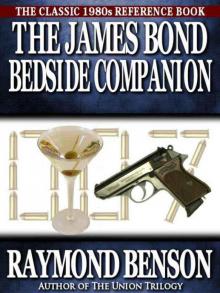 The James Bond Bedside Companion
The James Bond Bedside Companion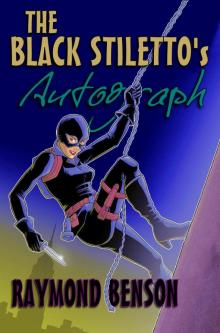 The Black Stiletto's Autograph
The Black Stiletto's Autograph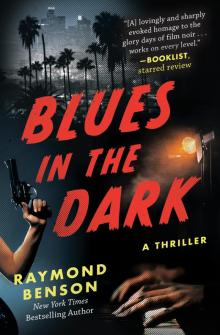 Blues in the Dark
Blues in the Dark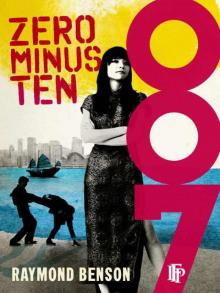 Zero Minus Ten
Zero Minus Ten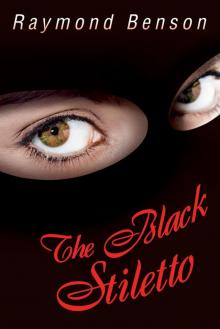 The Black Stiletto
The Black Stiletto Doubleshot
Doubleshot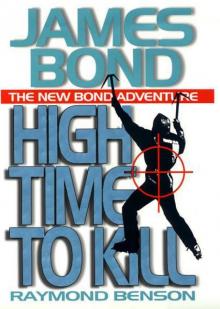 High Time To Kill rbb-3
High Time To Kill rbb-3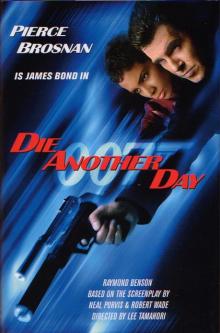 Bond Movies 07 - Die Another Day
Bond Movies 07 - Die Another Day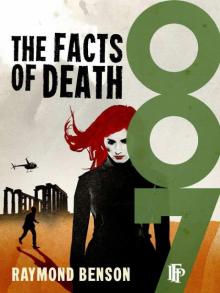 The Facts Of Death
The Facts Of Death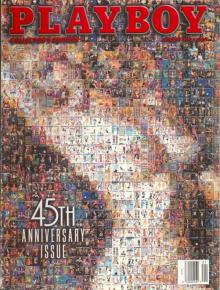 Midsummer Night's Doom
Midsummer Night's Doom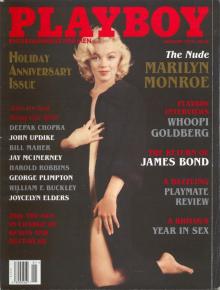 Blast from the Past
Blast from the Past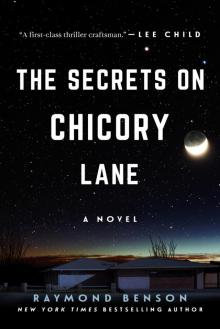 The Secrets on Chicory Lane
The Secrets on Chicory Lane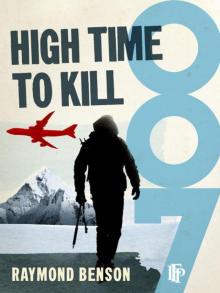 High Time To Kill
High Time To Kill The Black Stiletto: Black & White
The Black Stiletto: Black & White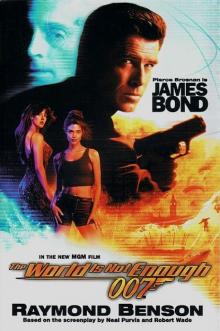 The World Is Not Enough jb-1
The World Is Not Enough jb-1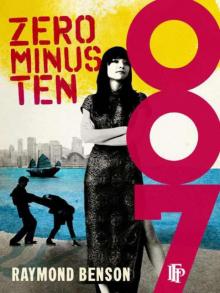 Zero Minus Ten rbb-1
Zero Minus Ten rbb-1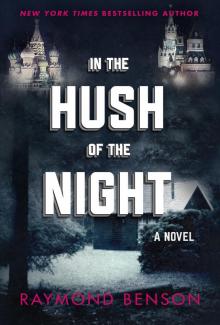 In the Hush of the Night
In the Hush of the Night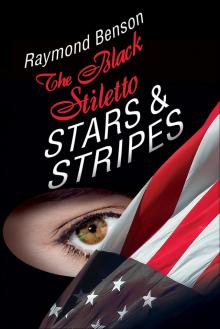 The Black Stiletto: Stars & Stripes
The Black Stiletto: Stars & Stripes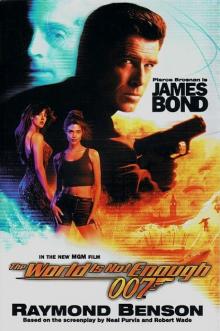 Bond Movies 06 - The World Is Not Enough
Bond Movies 06 - The World Is Not Enough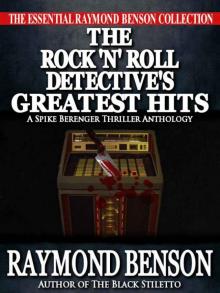 The Rock 'n Roll Detective's Greatest Hits - A Spike Berenger Anthology
The Rock 'n Roll Detective's Greatest Hits - A Spike Berenger Anthology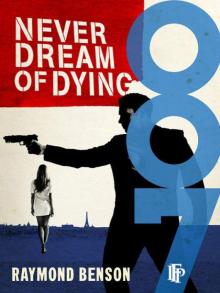 Never Dream Of Dying
Never Dream Of Dying